Politics
Bangladesh quake kills five, injures dozens

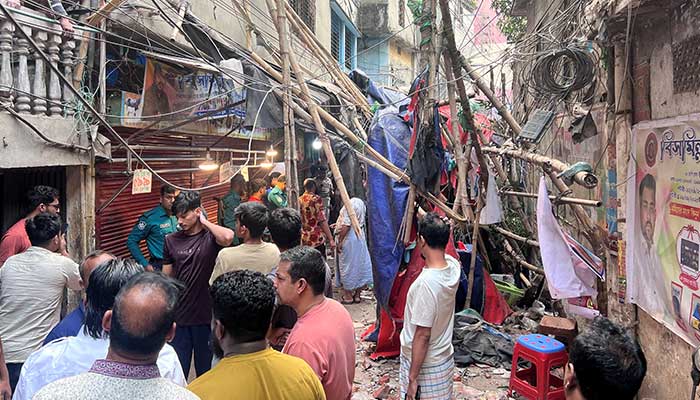
- Muhammad Yunus expresses “deep shock, sorrow” over casualties.
- Deceased include one child; around 100 injured in earthquake.
- Tremors also felt in India’s Kolkata located 325 km from epicentre.
DHAKA: A powerful earthquake struck Bangladesh on Friday outside the crowded capital Dhaka, killing at least five people and injuring around a hundred, the government said.
The 5.5-magnitude quake struck at 10:38am (0438 GMT) near the city of Narsingdi, about 33 kilometres (16 miles) from Dhaka, according to the US Geological Survey (USGS).
The Friday morning earthquake sparked fear and chaos with many in the nation of 170 million people at home on their day off.
AFP reporters in Dhaka saw people weeping in the streets while others appeared shocked.
Interim leader Muhammad Yunus expressed his “deep shock and sorrow over the news of casualties in various districts”.
At least five people, including a child, had been killed and around 100 people injured, including university students and factory workers, he said in a statement.
Nine people were taken to hospitals in Dhaka with serious injuries, according to the government’s health department.

An eyewitness told AFP that masonry from an eight-storey building in a Dhaka district had fallen onto a busy road below.
“Many people had gathered at the butcher” when the rubble fell, said Sakib Hossain, 50, who rushed out after hearing a loud bang.
“I saw vans carrying injured people,” he added.
The USGS warned of potentially “significant casualties” and damage.
Yunus said the government was taking “all necessary measures” and that emergency services were “responding swiftly to the reports of damages” from across the country, including in Dhaka.
The shaking lasted for 26 seconds, according to the Bangladesh Meteorological Department, which recorded the magnitude as 5.7.
“The situation is being closely monitored, and all relevant departments have been directed to immediately go to the field to assess any possible damages,” Yunus said.
Yunus, an 85-year-old Nobel Peace Prize winner, was selected after a mass uprising toppled the government in August 2024 to lead the country to elections slated for February 2026.
Strong tremors were felt as far as the Indian city of Kolkata, more than 325 kilometres away from the epicentre.
AFP reporters there saw people fleeing offices and homes after the sudden jolt.
“I felt tremors and my bed moved… I rushed out of my room,” said Sumit Dutta, 66.
There were no immediate reports of casualties or significant damage in India.
Politics
India’s Tejas fighter jet: specs and key details
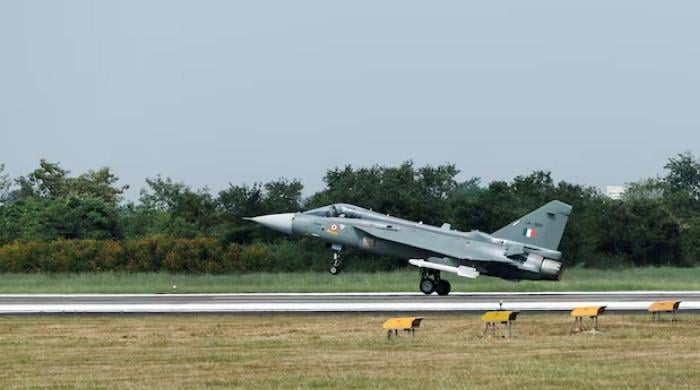

India’s defence and aviation sector suffered a major blow when its homegrown Tejas Mk-1A fighter jet crashed during an aerial display at the Dubai Airshow 2025 on Friday.
The pilot lost his life in the deadly accident, with the Indian Air Force announcing that a court of inquiry was being constituted, “to ascertain the cause of the accident”.
“IAF deeply regrets the loss of life and stands firmly with the bereaved family in this time of grief,” a post on the official X account of the IAF read.
The fighter jet, involved in the crash, is India’s first indigenous fighter, taking its maiden flight in January 2001, according to a report by AFP.
While the concept for a homegrown fighter aircraft began in the 1970s, actual work started on the aircraft project in the 1980s.
However, India’s state-owned Hindustan Aeronautics Limited’s (HAL) project for the fighter jet has faced years of criticism due to delays and cost overruns.
After years of delays, the first two Tejas fighter jets were finally handed over to the IAF in 2016.
India designates the single-engine jet as a multi-role light combat aircraft, featuring a delta-wing design.
HAL has reportedly equipped the modern variants with advanced avionics, an Active Electronically Scanned Array (AESA) radar, and enhanced electronic warfare systems.
According to Indian media outlets, the fighter jet can carry I-Derby extended-range (ER) and Astra beyond-visual-range (BVR) air-to-air missiles.
Tejas is reportedly also capable of firing short-range missiles such as the R-73, Python-5, and ASRAAM.
Recently, India signed a deal with United States’ General Electric to buy 113 engines to power its Tejas fighter jets, Reuters reported.
In a statement on November 7, HAL said that the deal was a follow-on order to power more of the fighters, with the engines expected to be delivered over five years from 2027.
The rollout of the fighter jet has been delayed due to slow deliveries from General Electric of 99 engines ordered in 2021, of which only four have arrived so far. GE has blamed supply chain issues following COVID-19.
Politics
Allegations of ‘Saffronization’ Raise Concerns About Indian Armed Forces’ Neutrality
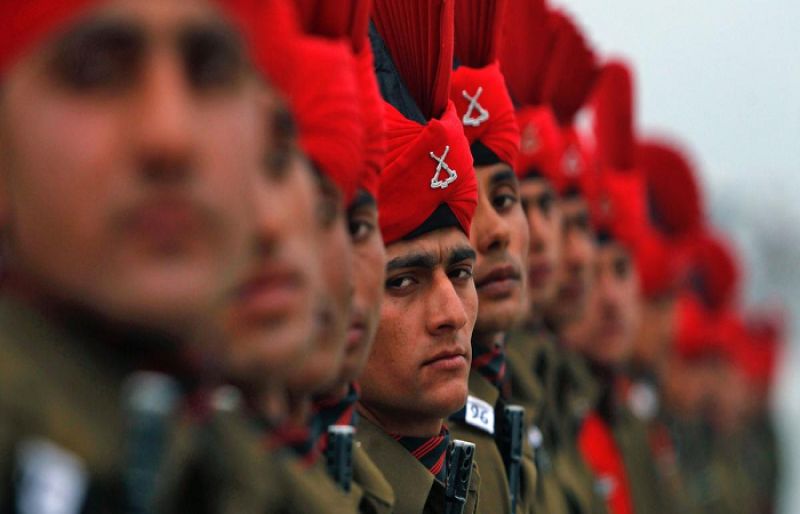
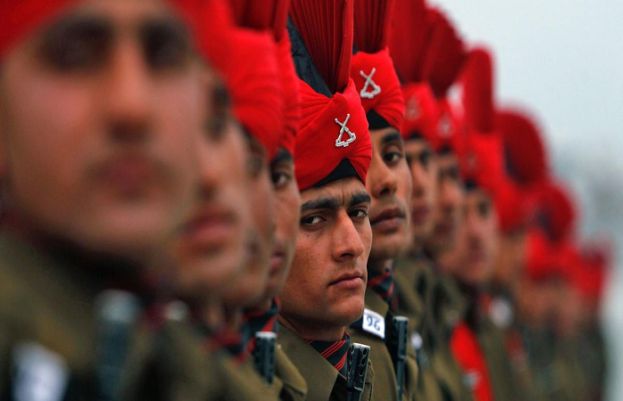
Reports indicate that the Indian Armed Forces (IAF, Army, and other branches) have seen increasing politicization and religious influence, raising concerns about the military’s neutrality and secular character.
Analysts and human rights organizations highlight the growing “saffronization” of the forces under Prime Minister Narendra Modi’s administration, linking military actions, symbols, and recruitment practices to Hindu nationalist agendas.
Religious Symbolism in Military Spaces
In January 2025, the Army Chief’s lounge in South Block, New Delhi, replaced a historic 1971 war painting with “Karam Kshetra”, depicting Hindu mythological figures alongside modern military assets.
Similarly, in December 2024, the Fire and Fury Corps unveiled a statue of 17th-century Hindu king Shivaji near Pangong Tso in Ladakh, accompanied by a saffron flag, signaling the assertion of Hindu identity in a sensitive strategic area.
Religious Rituals and Political Statements
Senior military officials, including the Army Chief, have participated publicly in Hindu rituals. On National Unity Day 2025, the Army Chief received a tilak and garland while in uniform.
Other visits, such as the COAS’s May 2025 trip to Hindu spiritual leader Rambhadracharya’s ashram, where he received religious initiation, have raised concerns about blurred lines between institutional duty and religious allegiance.
Politicization of Military Operations
Military operations have increasingly adopted Hindu religious names, such as “Sindoor” and “Mahadev”, reflecting ideological branding.
Statements by senior officials echoing BJP’s hardline rhetoric, including threats to Pakistan, suggest a shift toward aligning military discourse with nationalist political agendas.
Recruitment and Institutional Influence
The Agnipath scheme, initiated in 2022, and Sainik Schools are reportedly shaping future officers with influence from Hindu nationalist networks such as the RSS and affiliates of the Ram Mandir movement. Analysts warn this could embed ideological leanings in the military’s leadership pipeline.
Impact on Minority Officers
Reports indicate that minority officers, including Sikhs, Muslims, and Christians, face coercion to participate in Hindu rituals, professional insecurity, and social exclusion.
The case of Lt. Samuel Kamalesan, a Christian officer dismissed in 2025 for refusing to follow such practices, underscores growing concerns over institutional discrimination.
Human Rights Concerns
A 2025 Human Rights Watch report documents over 520 custodial deaths and extrajudicial killings in military custody, with some linked to ideological shifts and majoritarian policies.
Conclusion
Experts and analysts warn that these developments threaten the Indian Armed Forces’ secular, neutral character, cohesion, professionalism, and public legitimacy.
Critics argue that the military’s increasing alignment with Hindu nationalist politics risks turning it into a partisan force, compromising one of the country’s most critical institutions.
Politics
Afghanistan Eyes New Trade Paths as Pakistan Ties Worsen
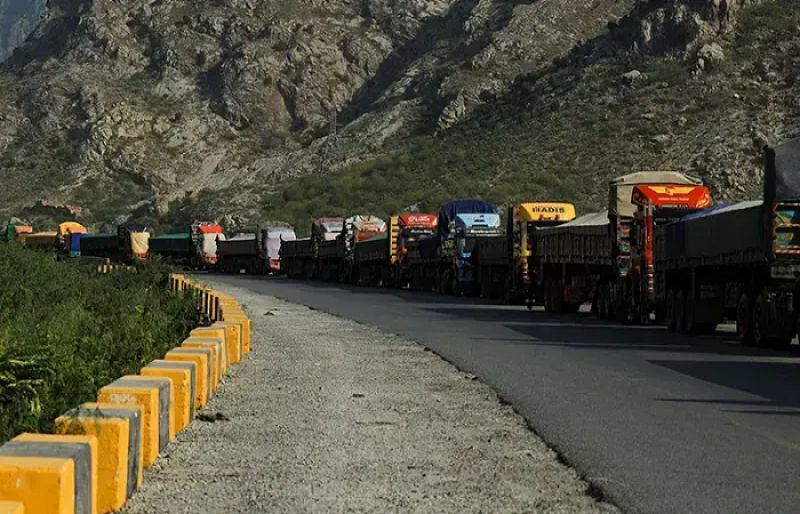

Afghanistan is racing to diversify its trade routes after a deadly border clash with Pakistan last month pushed ties to their lowest point in years, disrupting commerce and affecting communities on both sides of the frontier.
The South Asian neighbors have been embroiled in a tense dispute since the Taliban took control of Kabul in 2021, with Islamabad accusing Afghanistan of sheltering militants behind cross-border attacks—a claim the Taliban government denies.
Last week, Abdul Ghani Baradar, Afghanistan’s deputy prime minister for economic affairs, urged traders to “redirect their trade toward alternative routes instead of Pakistan.” He warned that Kabul would not intervene if businesses continued relying on Pakistani routes.
Pakistan has long been Afghanistan’s top trading partner, supplying rice, pharmaceuticals, and raw materials, while absorbing 45 percent of Afghan exports in 2024, according to the World Bank.
More than 70 percent of those exports, valued at $1.4 billion, consist of perishable agricultural goods such as figs, pistachios, grapes, and pomegranates.
The border closure on October 12, triggered by deadly cross-border fire, left dozens of Afghan trucks stranded with rotting produce.
Though a fragile truce followed, losses have already exceeded $100 million on both sides, impacting up to 25,000 border workers, according to the Pakistan Afghanistan Joint Chamber of Commerce and Industry (PAJCCI).
Facing potential future disruptions, the Taliban government is now exploring trade partnerships with Iran, Central Asia, and other markets to reduce dependence on Pakistan.
Pomegranates to Russia
Trade with Iran and Turkmenistan has jumped 60–70 percent since mid-October, said Mohammad Yousuf Amin, head of the Chamber of Commerce in Herat, in western Afghanistan.
Kabul also sent apples and pomegranates to Russia for the first time last month.
Russia is the only country to have officially recognised the Taliban administration.
Taliban leaders crave wider recognition and foreign investment, but sanctions on senior figures have made investors wary.
The vast market in India is a prime attraction. On Sunday, state-owned Ariana Afghan Airlines cut freight rates to the country of 1.4 billion people.
Two days later, Kabul sent its commerce and industry minister to New Delhi.
“Afghanistan has too many fruits and vegetables it cannot store because there are no refrigerated warehouses,” said Torek Farhadi, an economic analyst and former IMF adviser.
“Exporting is the only way,” he told AFP. And quickly, before the products spoil.
Kabul touts Iran’s Chabahar port as an alternative to Pakistan’s southern harbours, but Farhadi noted it is farther, costlier and hampered by US sanctions on Tehran.
Distraught
“It’s better for both countries to end this trade war… They need each other,” Farhadi said.
Afghanistan relies on Pakistan’s market of 240 million people and its sea access, while Islamabad wants Afghan transit to reach Central Asia for textile and energy trade.
Pakistan says the closure curbs militant infiltration, but its economy is also feeling the pinch.
In Peshawar, near the frontier, Afghan produce has all but vanished from markets.
Grapes cost four times more, and tomatoes have more than doubled to over 200 rupees (70 cents) a kilogram, an AFP correspondent found.
On Monday, the PAJCCI urged Islamabad to act, warning of mounting costs as shipping containers bound for Afghanistan and Central Asia remain stuck in Pakistan.
Each container is racking up $150–$200 in daily port charges, the group said, adding: “With thousands of containers stuck, the collective economic burden has become unbearable and continues to grow with each passing day.”
Truck driver Naeem Shah, 48, has been waiting at the Pakistani border town of Chaman with sugar and cooking oil bound for Afghanistan.
“I haven’t been paid for a month. No matter who I call, they say there is no money because the border is closed,” he told AFP. “If it doesn’t reopen, we will be distraught.”
-

 Tech6 days ago
Tech6 days agoNew carbon capture method uses water and pressure to remove CO₂ from emissions at half current costs
-

 Politics1 week ago
Politics1 week agoBritish-Pakistani honoured for transforming UK halal meat industry
-

 Business6 days ago
Business6 days agoThese 9 Common Money Mistakes Are Eating Your Income
-

 Sports6 days ago
Sports6 days agoTexas A&M officer scolds South Carolina wide receiver after touchdown; department speaks out
-

 Business7 days ago
Business7 days agoWhat’s behind Rachel Reeves’s hokey cokey on income tax rises?
-

 Sports7 days ago
Sports7 days agoApple scrapping MLS Season Pass service in ’26
-

 Fashion7 days ago
Fashion7 days agoAfter London, Leeds and Newcastle, next stop Glasgow for busy Omnes
-

 Tech1 week ago
Tech1 week ago$25 Off Exclusive Blue Apron Coupon for November 2025






